When a star explodes in a supernova, it leaves behind massive clouds of interstellar dust, gas, and plasma. Pictures of these supernova remnant nebulae can be absolutely stunning, as seen in this gallery of 15 Breathtaking Hubble Images of Supernova Remnant Nebulae.
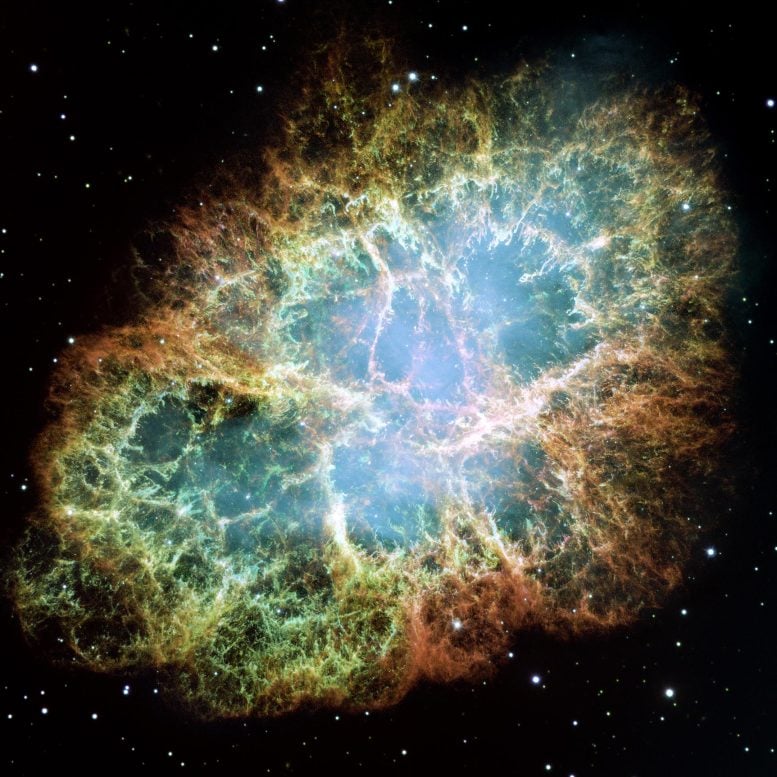
This is a mosaic image, one of the largest ever taken by NASA’s Hubble Space Telescope of the Crab Nebula, a six-light-year-wide expanding remnant of a star’s supernova explosion. Japanese and Chinese astronomers recorded this violent event nearly 1,000 years ago in 1054, as did, almost certainly, Native Americans. Credit: NASA, ESA, J. Hester and A. Loll (Arizona State University)
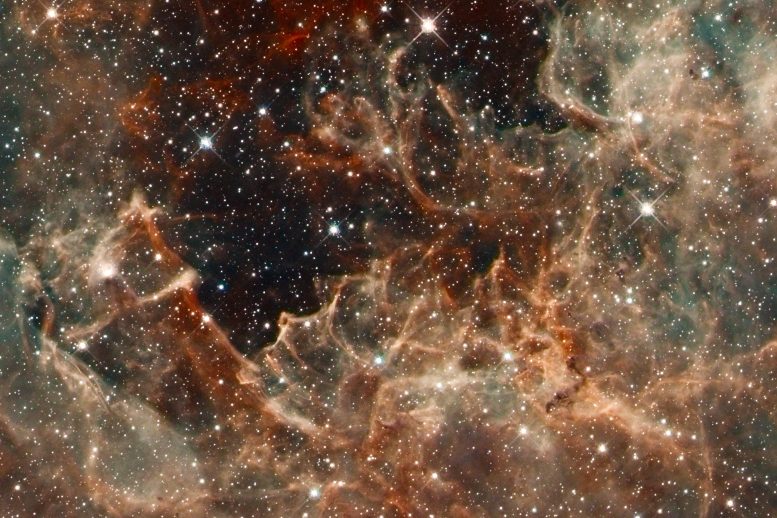
This region resembles a coral reef, but the gas has been eroded by the hefty stars in R136, situated above it. Cloaked in gas at the top of this rugged, gaseous terrain are nascent stars that cannot be seen. Dense columns of gas, several light-years long, protrude from the undulating landscape. These gaseous columns are incubators for developing stars.
30 Doradus is the brightest, nearby star-forming region and home to the most massive stars in our cosmic neighborhood of about 25 galaxies. The nebula is close enough to Earth that Hubble can resolve individual stars, giving astronomers important information about the stars’ birth and evolution. 30 Doradus resides 170,000 light-years away in the Large Magellanic Cloud, a small, satellite galaxy of our Milky Way.
Credit: NASA, ESA, D. Lennon and E. Sabbi (ESA/STScI), J. Anderson, S. E. de Mink, R. van der Marel, T. Sohn, and N. Walborn (STScI), N. Bastian (Excellence Cluster, Munich), L. Bedin (INAF, Padua), E. Bressert (ESO), P. Crowther (University of Sheffield), A. de Koter (University of Amsterdam), C. Evans (UKATC/STFC, Edinburgh), A. Herrero (IAC, Tenerife), N. Langer (AifA, Bonn), I. Platais (JHU), and H. Sana (University of Amsterdam)
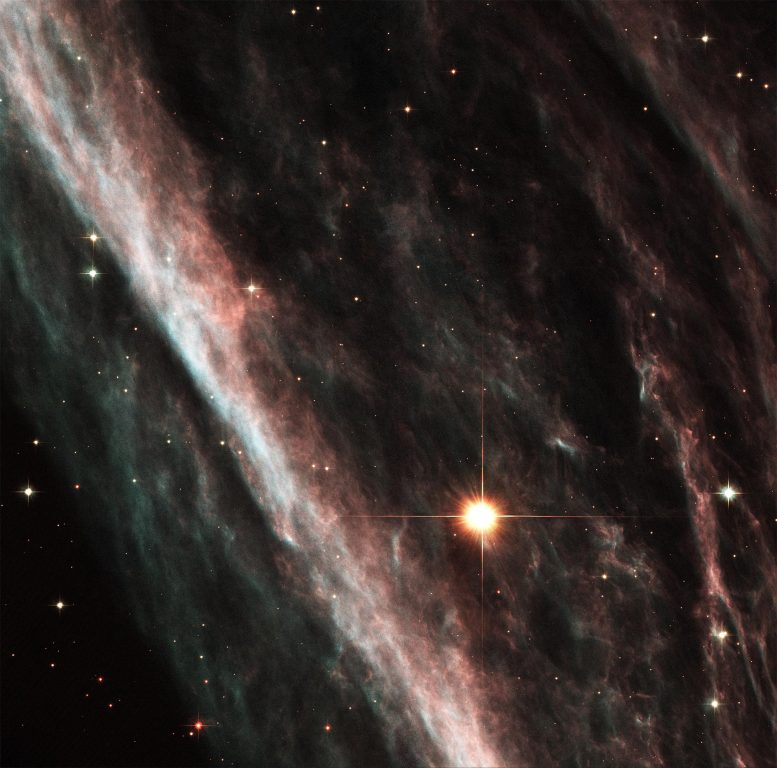
Remnants from a star that exploded thousands of years ago created a celestial abstract portrait, as captured in this NASA/ESA Hubble Space Telescope image of the Pencil Nebula. Officially known as NGC 2736, the Pencil Nebula is part of the huge Vela supernova remnant, located in the southern constellation Vela. Discovered by Sir John Herschel in the 1840s, the nebula’s linear appearance triggered its popular name. The nebula’s shape suggests that it is part of the supernova shock wave that recently encountered a region of dense gas. It is this interaction that causes the nebula to glow, appearing like a rippled sheet. Credit: NASA/ESA and The Hubble Heritage Team (STScI/AURA)
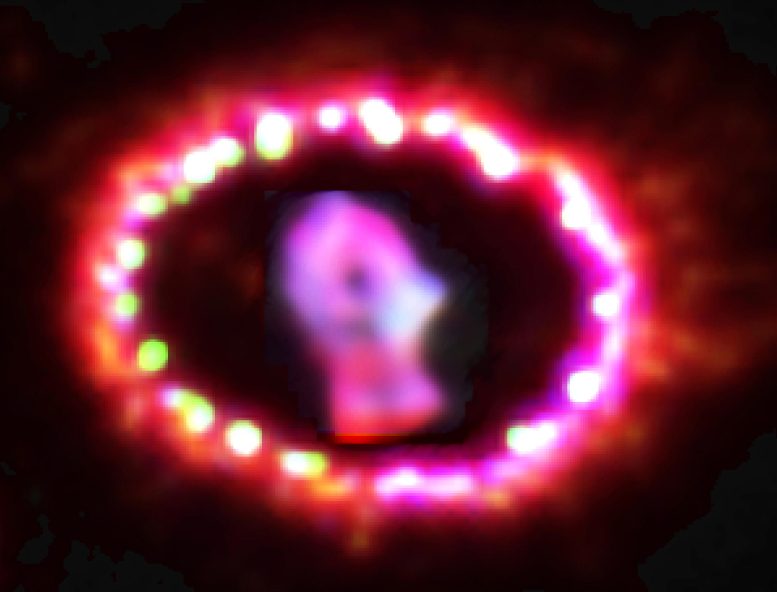
This Hubble Space Telescope image of SN 1987A shows the brightening ring of supernova debris. The closest supernova explosion seen in almost 400 years, it is located in the Large Magellanic Cloud. Credit: NASA, ESA, and P. Challis (Harvard-Smithsonian Center for Astrophysics)
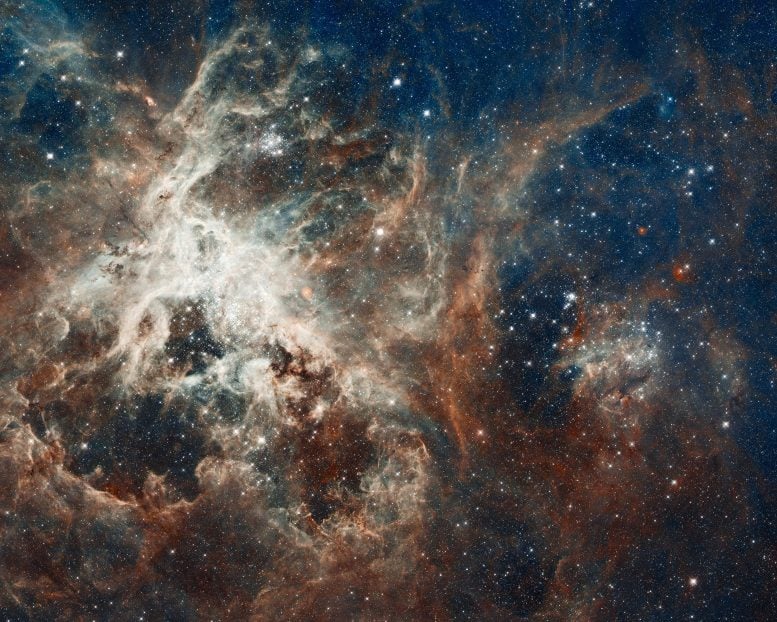
Several million young stars are vying for attention in this NASA Hubble Space Telescope image of a raucous stellar breeding ground in 30 Doradus, located in the heart of the Tarantula Nebula. Early astronomers nicknamed the nebula because its glowing filaments resemble spider legs. Credit: NASA, ESA, D. Lennon and E. Sabbi (ESA/STScI), J. Anderson, S. E. de Mink, R. van der Marel, T. Sohn, and N. Walborn (STScI), N. Bastian (Excellence Cluster, Munich), L. Bedin (INAF, Padua), E. Bressert (ESO), P. Crowther (University of Sheffield), A. de Koter (University of Amsterdam), C. Evans (UKATC/STFC, Edinburgh), A. Herrero (IAC, Tenerife), N. Langer (AifA, Bonn), I. Platais (JHU), and H. Sana (University of Amsterdam)
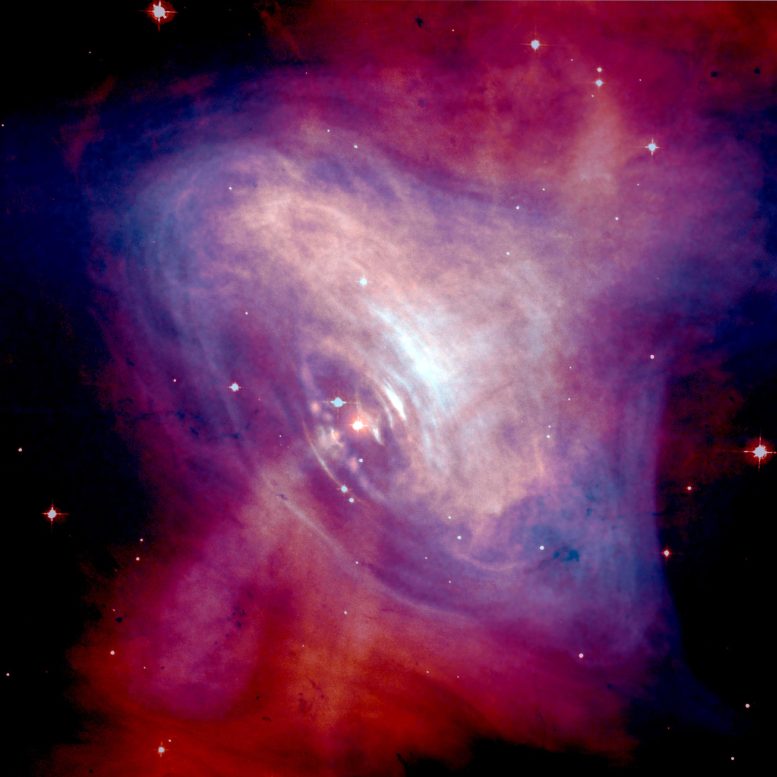
A composite image of the Crab Nebula showing the X-ray (blue), and optical (red) images superimposed. The size of the X-ray image is smaller because the higher energy X-ray emitting electrons radiate away their energy more quickly than the lower energy optically emitting electrons as they move. Credit: NASA/CXC/ASU/J. Hester et al.
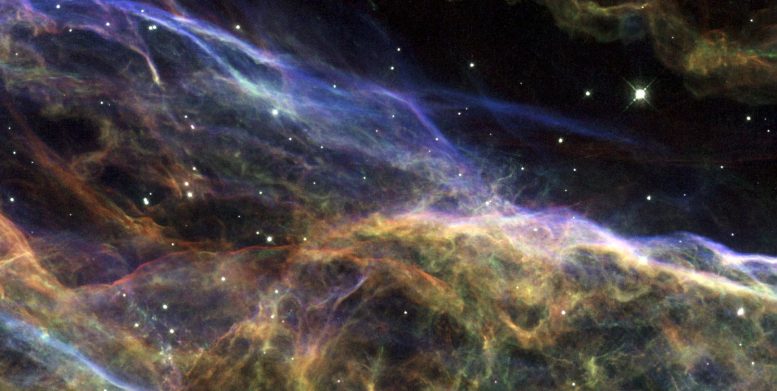
This image shows a small portion of the Veil Nebula – the shattered remains of a supernova that exploded some 5-10,000 years ago. The intertwined rope-like filaments of gas result from the enormous amounts of energy released as the fast-moving debris from the explosion ploughs into its surroundings and creates shock fronts. These shocks, driven by debris moving at 600,000 kilometers per hour, heat the gas to millions of degrees. It is the subsequent cooling of this material that produces the brilliantly colored glows.
This portion of the Veil Nebula is located in a magnificent part of the Veil known as the Witch’s Broom Nebula to the east (to the right in the overview image). The entire structure spans about 3 degrees, corresponding to about 6 full moons. The bright blue star – dubbed 52 Cygni and unrelated to the supernova explosion – can be observed with the naked eye on a clear summer’s night.
The image was taken with the Wide Field and Planetary Camera 2 (WFPC2) on board the Hubble Space Telescope. The colour is produced by composite of three different images. The different colours indicate emission from different kinds of atoms excited by the shock: blue shows oxygen, green shows sulfur, and red shows hydrogen.
Credit: NASA, ESA, and the Hubble Heritage (STScI/AURA)-ESA/Hubble Collaboration. Acknowledgment: J. Hester (Arizona State University)
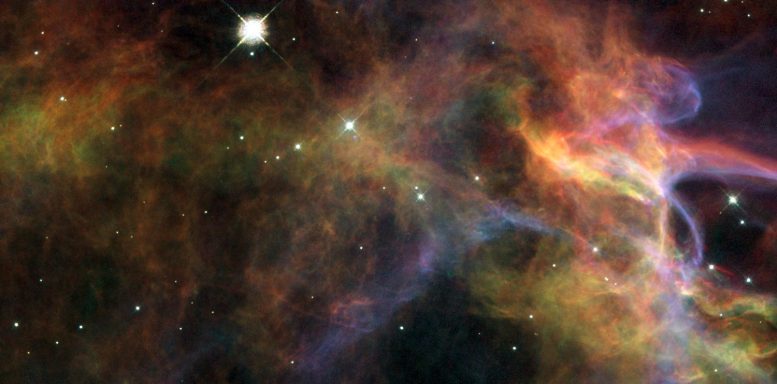
This image is a stunning close-up of the Veil Nebula – the shattered remains of a supernova that exploded some 5-10,000 years ago. The image provides a beautiful view of the delicate, wispy structure resulting from this cosmic explosion. Also known as Cygnus Loop, the Veil Nebula is located in the constellation of Cygnus, the Swan, and is about 1,500 light-years away from Earth.
This small portion of the Veil Nebula is located in the larger segment seen in its western part (the top left corner of the large ground-based overview image). The entire structure spans about 3 degrees, corresponding to about 6 full moons.
The image was taken with Hubble’s Wide Field and Planetary Camera 2 (WFPC2). The color is produced by composite of three different images. The different colors indicate emission from different kinds of atoms excited by the shock: blue shows oxygen, green shows sulfur, and red shows hydrogen.
Credit: NASA, ESA, and the Hubble Heritage (STScI/AURA)-ESA/Hubble Collaboration. Acknowledgment: J. Hester (Arizona State University)
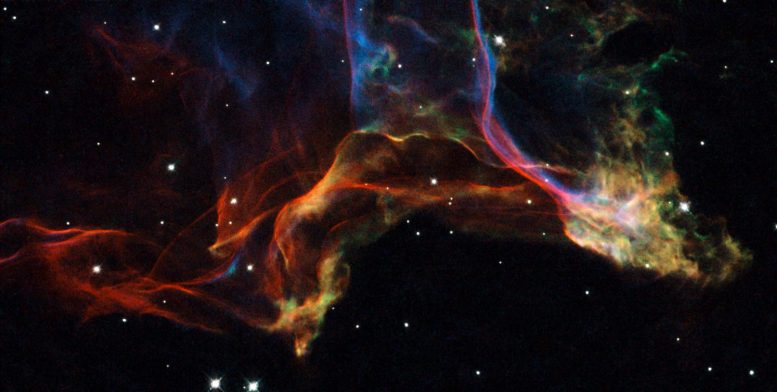
This image shows a beautiful portion of the Veil Nebula – the shattered remains of a supernova that exploded some 5-10,000 years ago. The intertwined rope-like filaments of gas result from the enormous amounts of energy released as the fast-moving debris from the explosion ploughs into its surroundings and creates shock fronts.
The image displays two characteristic features: sharp filaments and diffuse emission. These correspond to two different viewing geometries: sharp filaments correspond to an edge-on view of a shock front, and diffuse emission corresponds to a face-on view of it.
This image is a small portion of the Veil located in the western part of the Veil (to the left in the overview image). The entire structure spans about 3 degrees, corresponding to about 6 full moons.
The image was taken with the Wide Field and Planetary Camera 2 (WFPC2) on board the Hubble Space Telescope. The color is produced by composite of three different images. The different colors indicate emission from different kinds of atoms excited by the shock: blue shows oxygen, green shows sulfur, and red shows hydrogen.
Credit: NASA, ESA, and the Hubble Heritage (STScI/AURA)-ESA/Hubble Collaboration. Acknowledgment: J. Hester (Arizona State University)
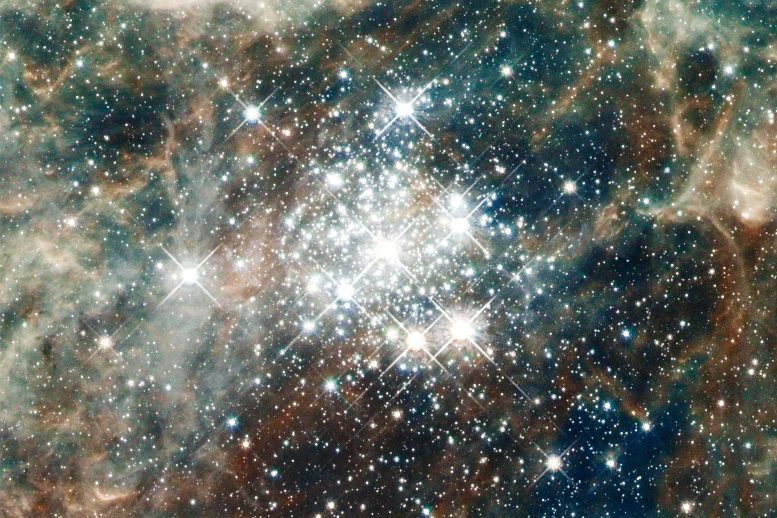
The star cluster Hodge 301 is 20 million to 25 million years old. Hodge 301 is home to many aging, red supergiant stars, indicating the cluster is older. Roughly 40 massive stars already have exploded as supernovas. The expanding wave of debris is slamming into gas ejected by stars in R136, creating a ridge of star formation between the two clusters. The fledgling stars are embedded in dense gas and cannot be seen.
30 Doradus is the brightest, nearby star-forming region and home to the most massive stars in our cosmic neighborhood of about 25 galaxies. The nebula is close enough to Earth that Hubble can resolve individual stars, giving astronomers important information about the stars’ birth and evolution. 30 Doradus resides 170,000 light-years away in the Large Magellanic Cloud, a small, satellite galaxy of our Milky Way.
Credit: NASA, ESA, D. Lennon and E. Sabbi (ESA/STScI), J. Anderson, S. E. de Mink, R. van der Marel, T. Sohn, and N. Walborn (STScI), N. Bastian (Excellence Cluster, Munich), L. Bedin (INAF, Padua), E. Bressert (ESO), P. Crowther (University of Sheffield), A. de Koter (University of Amsterdam), C. Evans (UKATC/STFC, Edinburgh), A. Herrero (IAC, Tenerife), N. Langer (AifA, Bonn), I. Platais (JHU), and H. Sana (University of Amsterdam)
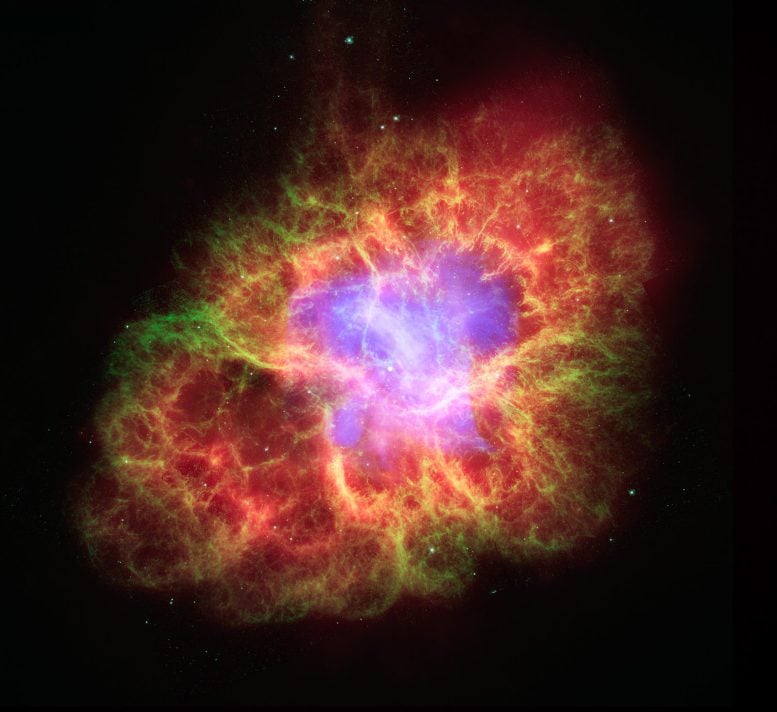
This composite image uses data from three of NASA’s Great Observatories.
The Chandra X-ray image is shown in light blue, the Hubble Space Telescope optical images are in green and dark blue, and the Spitzer Space Telescope’s infrared image is in red. The size of the X-ray image is smaller than the others because ultrahigh-energy X-ray emitting electrons radiate away their energy more quickly than the lower-energy electrons emitting optical and infrared light.
The neutron star, which has the mass equivalent to the sun crammed into a rapidly spinning ball of neutrons twelve miles across, is the bright white dot in the center of the image.
Credit: X-ray: NASA/CXC/J.Hester (ASU); Optical: NASA/ESA/J.Hester, and A.Loll (ASU); Infrared: NASA/JPL-Caltech/R.Gehrz (Univ. Minn.)
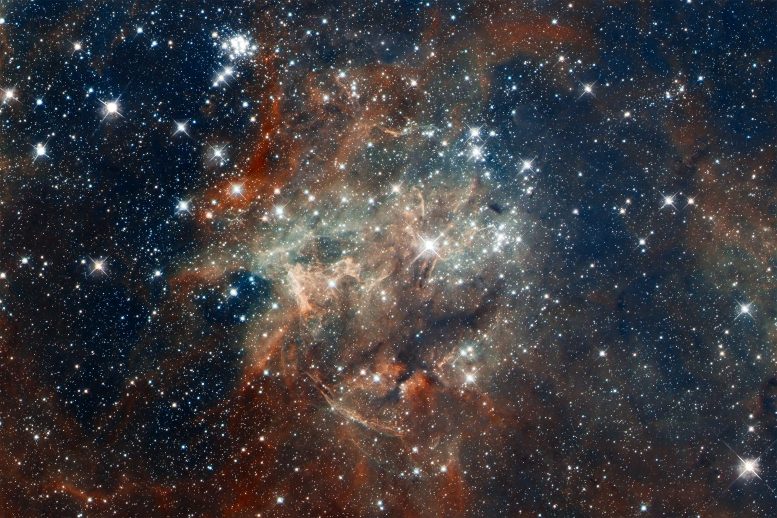
The star cluster NGC 2060 is a loose collection of stars that are no longer gravitationally bound to each other. The stellar grouping will disperse in a few million years. It contains a supernova that exploded about 10,000 years ago, blowing out gas surrounding it. The dark region below the cluster is a dense cloud of dust lying in front of it.
30 Doradus is the brightest, nearby star-forming region and home to the most massive stars in our cosmic neighborhood of about 25 galaxies. The nebula is close enough to Earth that Hubble can resolve individual stars, giving astronomers important information about the stars’ birth and evolution. 30 Doradus resides 170,000 light-years away in the Large Magellanic Cloud, a small, satellite galaxy of our Milky Way.
Credit: NASA, ESA, D. Lennon and E. Sabbi (ESA/STScI), J. Anderson, S. E. de Mink, R. van der Marel, T. Sohn, and N. Walborn (STScI), N. Bastian (Excellence Cluster, Munich), L. Bedin (INAF, Padua), E. Bressert (ESO), P. Crowther (University of Sheffield), A. de Koter (University of Amsterdam), C. Evans (UKATC/STFC, Edinburgh), A. Herrero (IAC, Tenerife), N. Langer (AifA, Bonn), I. Platais (JHU), and H. Sana (University of Amsterdam)
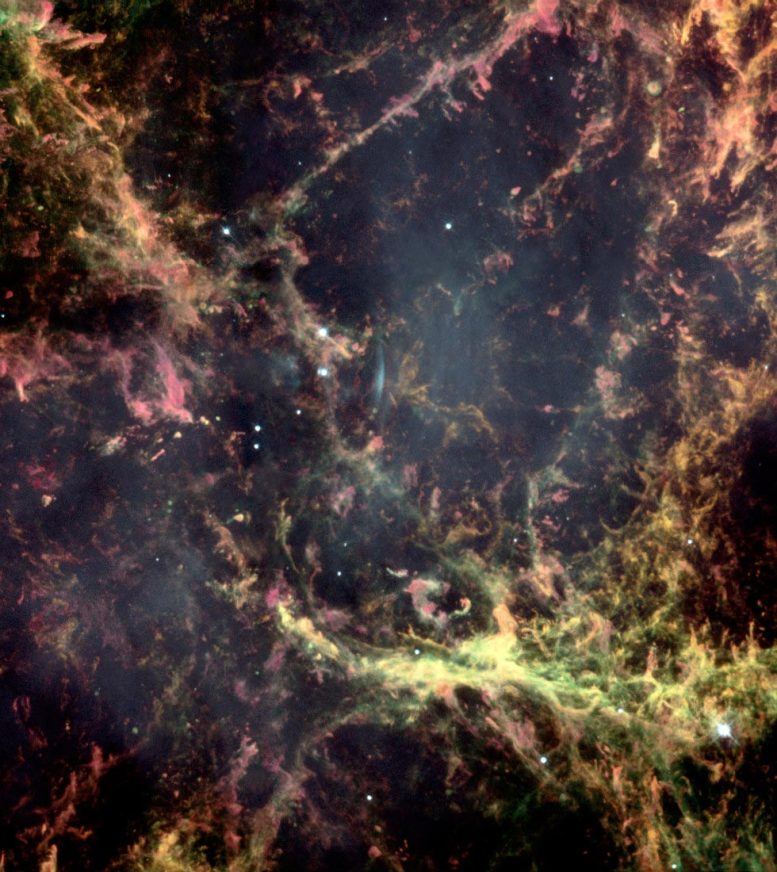
Multiple observations made over several months with NASA’s Chandra X-ray Observatory and the NASA/ESA Hubble Space Telescope captured the spectacle of matter and antimatter propelled to near the speed of light by the Crab pulsar, a rapidly rotating neutron star the size of Manhattan.
In the year 1054 A.D., Chinese astronomers were startled by the appearance of a new star, so bright that it was visible in broad daylight for several weeks. Today, the Crab Nebula is visible at the site of that bright star.
Credit: NASA/ESA and The Hubble Heritage Team (STScI/AURA)
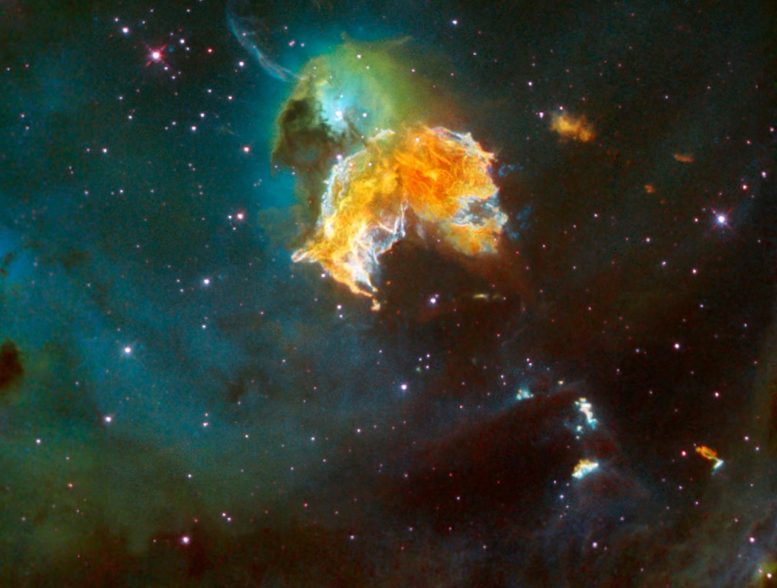
When a massive star exploded, spewing out its gaseous layers into a turbulent, star-forming region of the Large Magellanic Cloud, it left behind this chaotic cloud of gas and dust. The star that produced this supernova remnant was probably 50 times the mass of our Sun. Credit: NASA, ESA, HEIC, and The Hubble Heritage Team (STScI/AURA) Acknowledgment: Y.-H. Chu and R. M. Williams (UIUC)


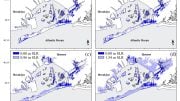




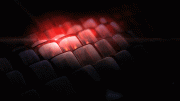
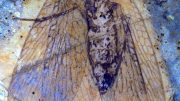
Be the first to comment on "15 Breathtaking Hubble Images of Supernova Remnant Nebulae"